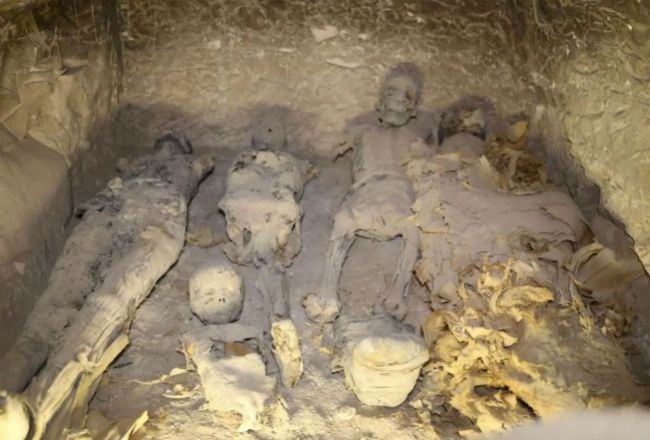A newly discovered stash of ancient Egyptian treasures, including a woman's mummified remains, were recently unveiled near Luxor.
While any discovery of Egyptian artifacts is significant, experts were stunned by the remarkable condition of the mummy and other treasures from her tomb.
Her sarcophagus was opened in front of news cameras from around the world, while researchers marveled at how intact her mummified body was, more than 3,000 years after her death.

The woman, who archaeologists say was named Pouyou, was discovered with her treasures in a tomb along the Nile, near where other Egyptian nobles were buried.
Along with the woman and her elegantly decorated coffin (called a sarcophagus), archaeologists found the remains of a priest in a nearby tomb, along with paintings and around 1,000 small ritual statues, who were meant to represent servants for the mummies in the afterlife.


Researchers from both France and Egypt spent more than five months carefully moving rubble to uncover the tombs and their priceless contents, before finally reaching them earlier this month.
Experts say the structure was built nearly 4,000 years ago, but seems to have been reused, because skulls, skeletons, and even mummies out of their sarcophagi were found in the tombs.
Although, some guess that the "loose" mummies were members of the mummified woman's family.

Ancient Egyptians removed the organs and preserved the bodies of honored dead in a complex mummification process. The preserved remains were put in tombs with treasures and offerings meant to comfort them in the afterlife.

But many of these valuable hordes have been targeted by graverobbers in the centuries since their owners were laid to rest.


While discoveries of intact tombs are rare, there have been a few in recent years. Just this summer, the discovery of a massive black sarcophagus captured the world's attention.
When the enormous coffin was finally opened, researchers found a trio of bodies inside, along with a handful of treasures. Archaeologists are still trying to piece together who the bodies belonged to, and why they were buried together.
[H/T: LiveScience]

